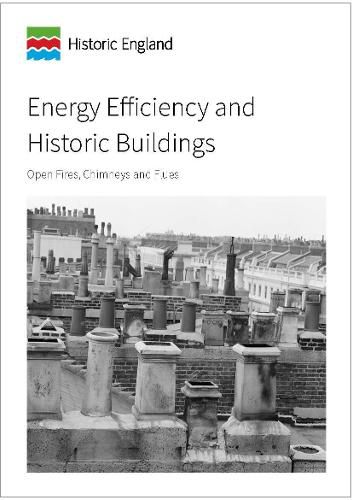Energy Efficiency and Historic Buildings: Open Fires, Chimneys and Flues
David Pickles

Energy Efficiency and Historic Buildings: Open Fires, Chimneys and Flues
David Pickles
This guidance provides advice on how unused or intermittently used chimneys can be made more energy efficient by preventing draughts. Open chimneys and flues can be useful sources of ventilation but they can often let too much warm air out and cold air in. The resultant draughts can create uncomfortable conditions. Chimneys in older buildings can develop a wide range of defects. This guidance note also discusses how to avoid introducing further defects when measures are taken to improve energy efficiency but it does not cover the diagnosis or remedy of common defects.
Chimneys are often prominent and significant parts of historic buildings and fireplaces are frequently striking and significant elements of the interior. Many chimneys were constructed in single skin brickwork and are very sensitive to alteration. Great care should be taken and specialist advice sought, before adapting or altering a chimney.
Fireplaces and chimneys are often still in use, some for open fires, some for room heating stoves, and some for central heating and hot water boilers. Many other fireplaces and chimneys are no longer needed and have been blocked up, temporarily or permanently. Whether used or unused, fireplaces and chimneys can have an important role in improving the energy efficiency of a building.
This guidance forms one of a series of thirteen guidance notes covering the thermal upgrading of building elements such as roofs, walls and floors.
This item is not currently in-stock. It can be ordered online and is expected to ship in approx 4 weeks
Our stock data is updated periodically, and availability may change throughout the day for in-demand items. Please call the relevant shop for the most current stock information. Prices are subject to change without notice.
Sign in or become a Readings Member to add this title to a wishlist.


